Annual Sports Day comes to a Grand Close
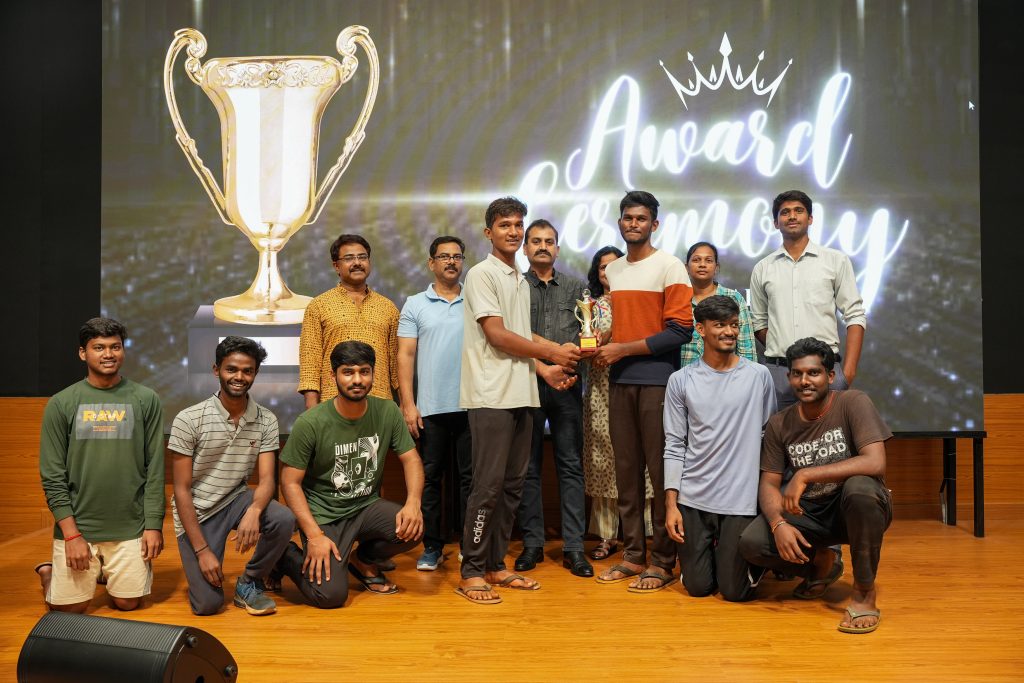
The Directorate of Sports at SRM University-AP organised its highly anticipated Annual Sports Day on March 16 and 17, 2024. This exciting event was conducted in the wake of its 3-day National Sports Fest -UDGAM ‘24. The event was graced by Mr Anup Singh Suryavanshi, Director of Campus Life & Maintenance, and Mr Anil Kumar Nigam, Director of Student Affairs, as its chief guest.
The Annual Sports Day saw an impressive participation of 669 athletes. These talented athletes engaged in an intense and spirited competition, showcasing their skills and abilities in both individual and team events. It was truly a spectacle to behold, with participants and spectators alike left in awe of the incredible displays of athleticism and sportsmanship on display. The event showcased a remarkable display of skill and persistence across various competitions in Badminton, Table Tennis, Chess, Kabaddi, Cricket, Volleyball and several others.
The annual sports fest culminated with a prize distribution ceremony, Assistant Director of Sports, Ms Sushmitha Kumari; Director of International Relations and Higher Studies, Ms Aditi Jain; Associate Director of Entrepreneurship and Innovation, Mr Udayan Bakshi alongside sports officer, coaches, athletes and students bore witness to this momentous occasion. As the curtains close on an exhilarating annual sports fest, we eagerly anticipate the continuation of a legacy focused on promoting sportsmanship, fostering healthy competition, and nurturing the talents of young athletes.
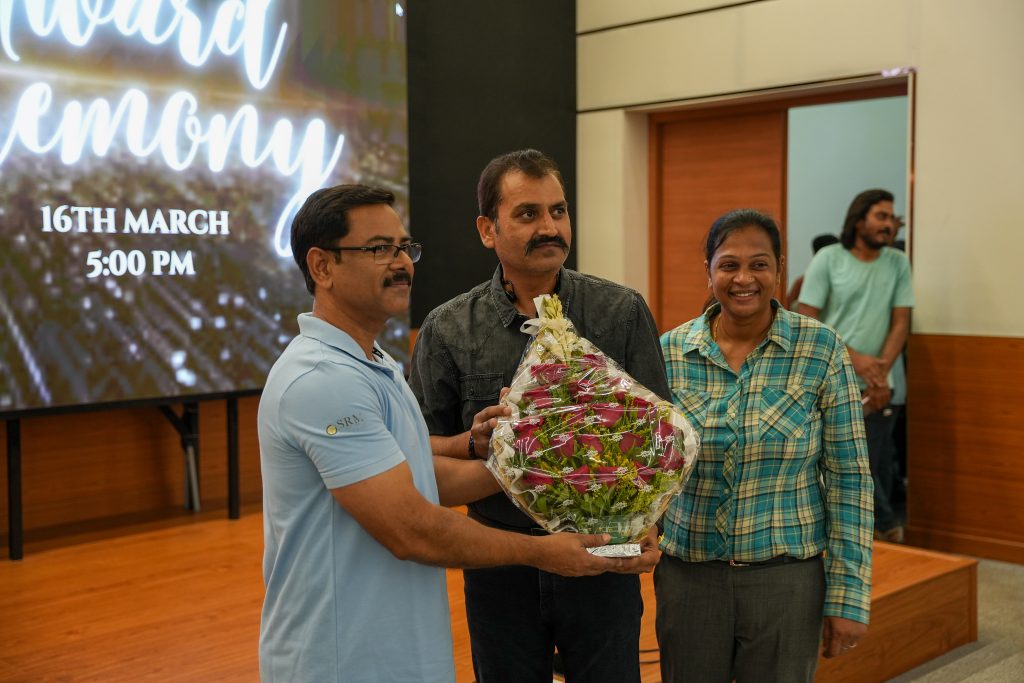
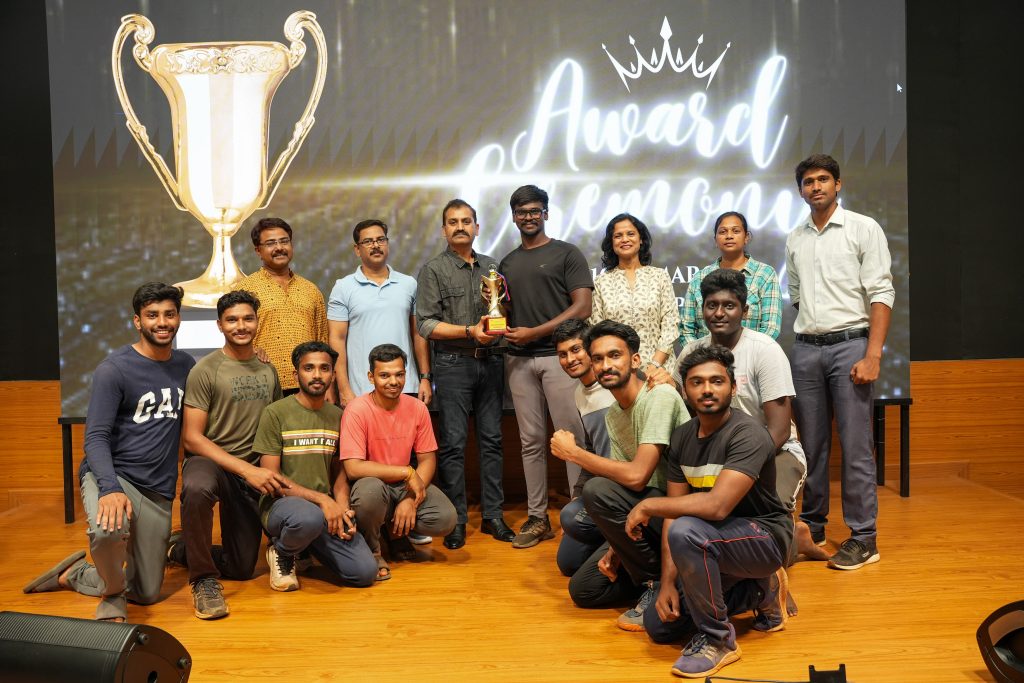
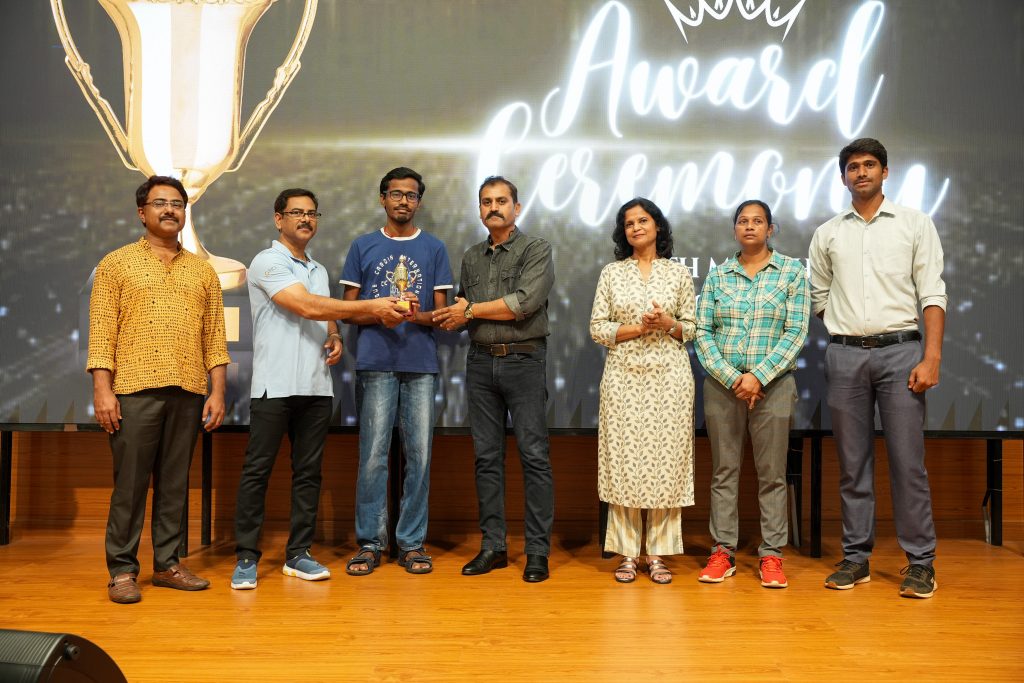
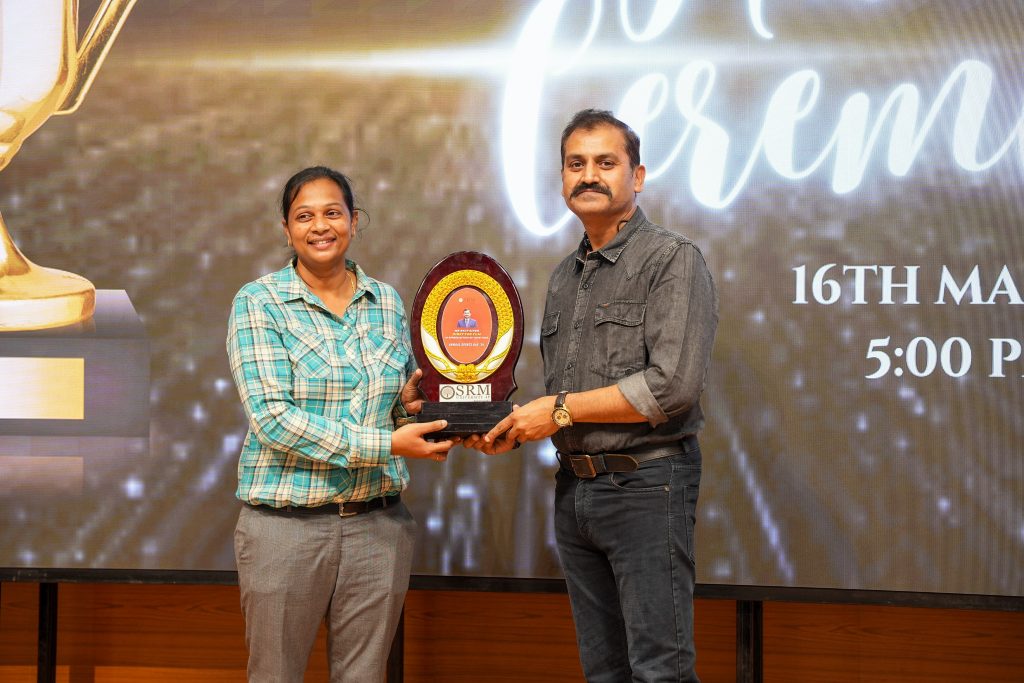
- Published in Departmental News, News, Sports News, student affairs news
Celebrating Inclusion: Empowering Women Workforce at SRM AP
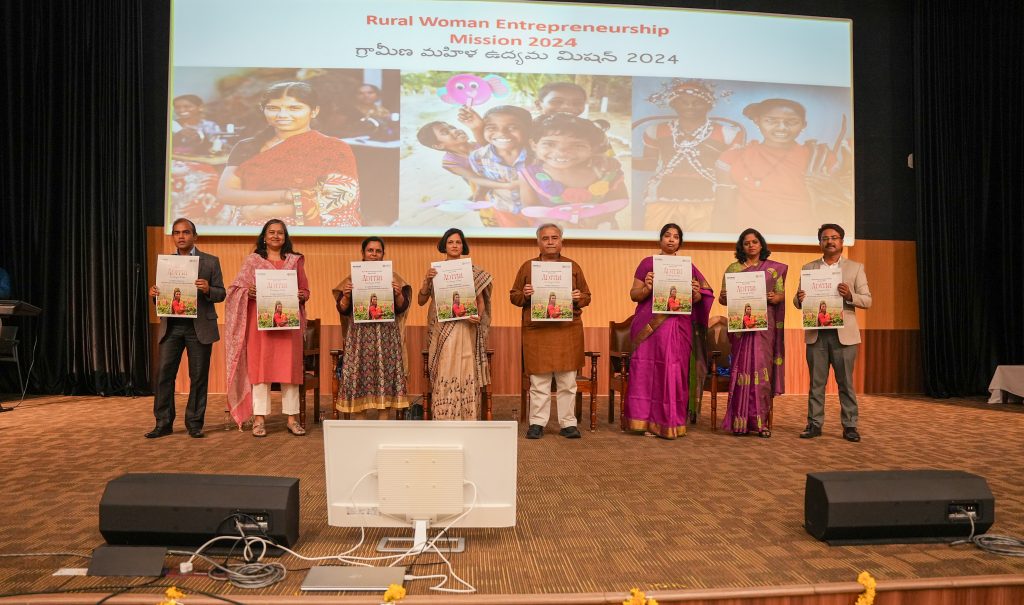 In commemoration of International Women’s Day, the Directorate of Student Affairs and the Directorate of HR collaborated to orchestrate a vibrant celebration on campus. The celebration witnessed Dr Shikha Jain, Director of Preservation and Community Design at DRONAH and Vice-President of ICOFORT, as its esteemed guest, alongside her were distinguished figures, including Vice Chancellor, Prof. Manoj K Arora; Associate Director of Faculty Affairs Prof. Sheela Singh; Professor of Liberal Arts, Dr Vandana Swami; and Associate Director of Student Affairs, Ms Revathi B.
In commemoration of International Women’s Day, the Directorate of Student Affairs and the Directorate of HR collaborated to orchestrate a vibrant celebration on campus. The celebration witnessed Dr Shikha Jain, Director of Preservation and Community Design at DRONAH and Vice-President of ICOFORT, as its esteemed guest, alongside her were distinguished figures, including Vice Chancellor, Prof. Manoj K Arora; Associate Director of Faculty Affairs Prof. Sheela Singh; Professor of Liberal Arts, Dr Vandana Swami; and Associate Director of Student Affairs, Ms Revathi B.
Dr Sikha Jain, in her keynote address, reverberated with homage to the timeless strength inherent in women, drawing parallels with the archetype of Goddess Durga, symbolising courage, bravery, and compassion. She urged all attendees to embody these virtues and champion gender parity in every sphere of life.
Prof. Arora, in his speech, emphasised on the pivotal role women play in shaping our present and future, excelling across diverse domains from space exploration to entrepreneurship. Embracing this year’s theme, “Inspiring Inclusion,” he stated, “our dedication lies in cultivating a world where everyone appreciates and supports women’s contributions, ensuring they experience profound empowerment and a sense of belonging”.
The event also marked the launch of ‘Aditri-The Horizon of Hope,’ a transformative initiative aimed at empowering rural women, serving as a testament to the university’s commitment to fostering positive change. This pioneering endeavour was inaugurated by Mr Sidharth Shankar Tripathy, Director – Entrepreneurship and Innovation & Professor of Practice. The celebration reached its zenith with captivating performances by our talented staff, faculty and students, culminating in a joyous prize distribution for the Women’s Day competitions.


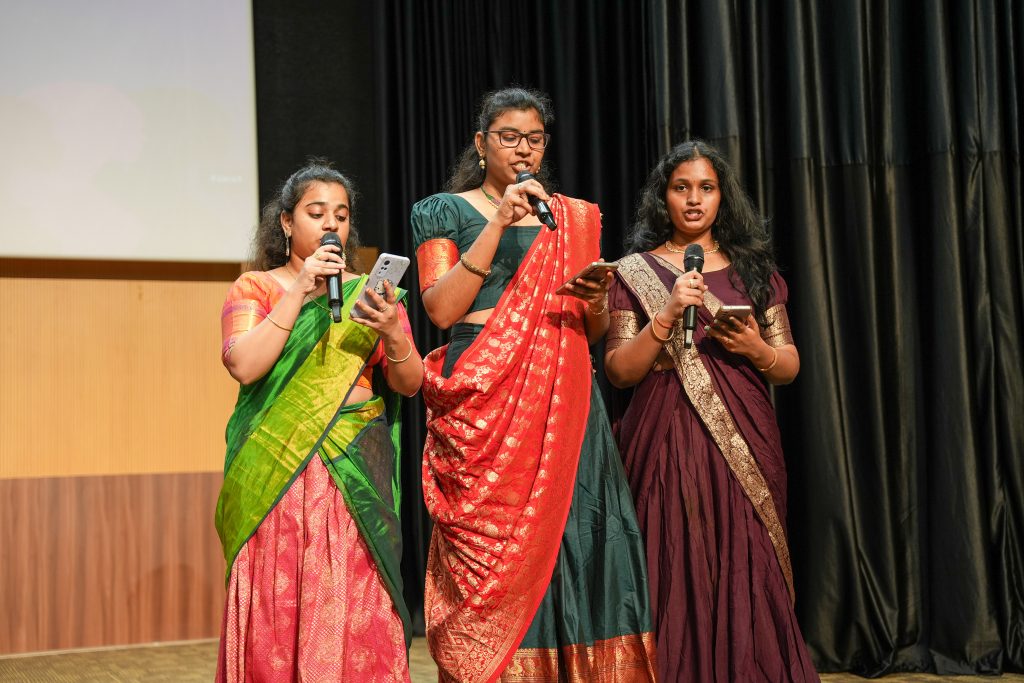

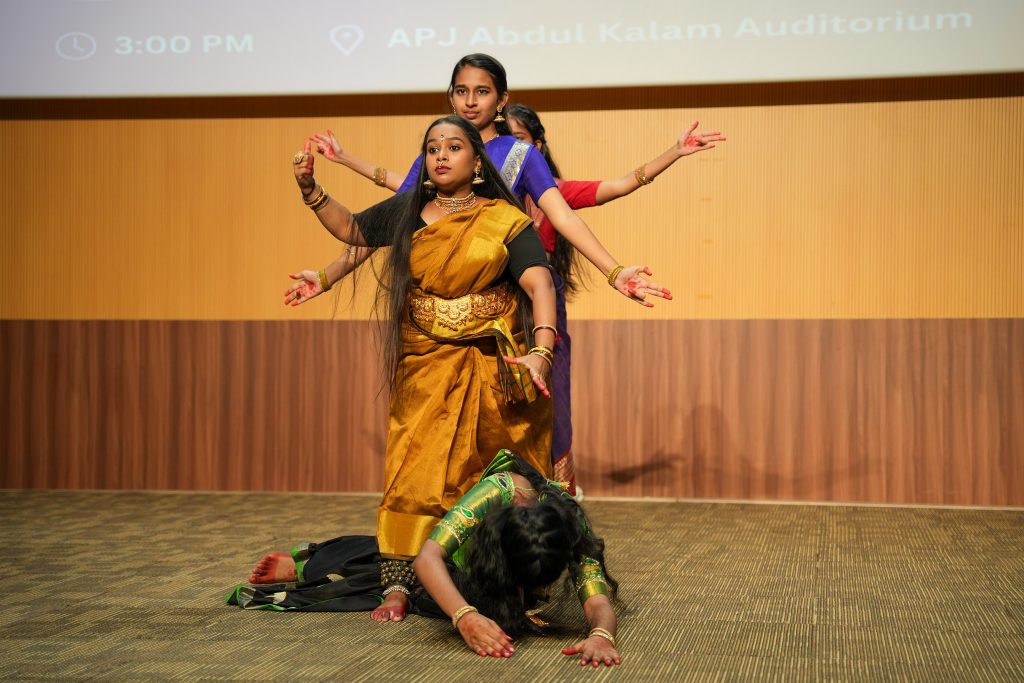
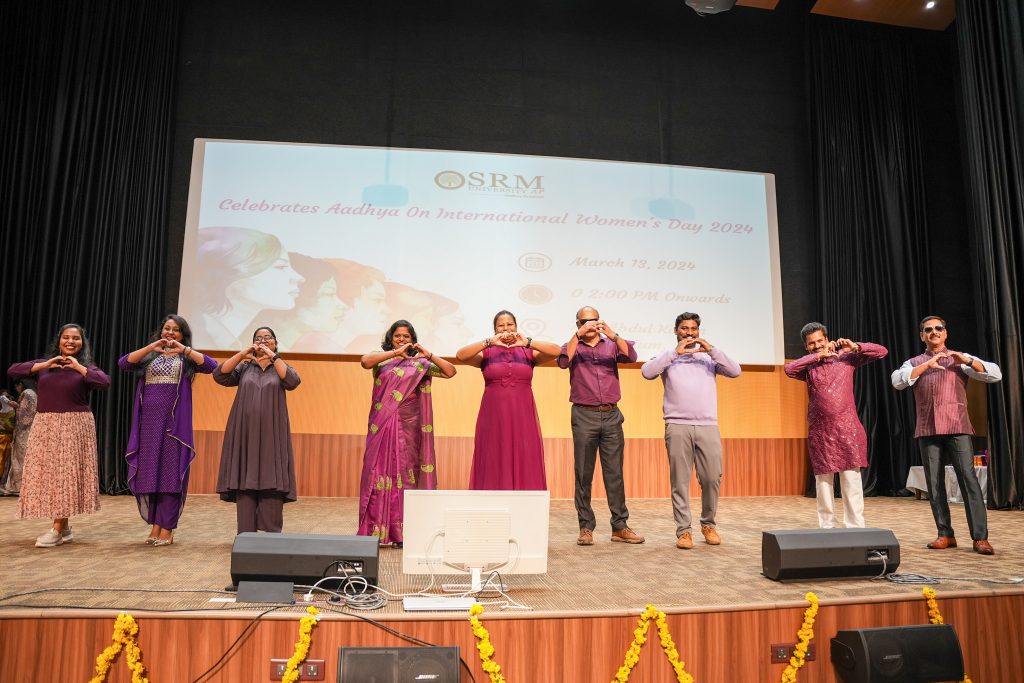
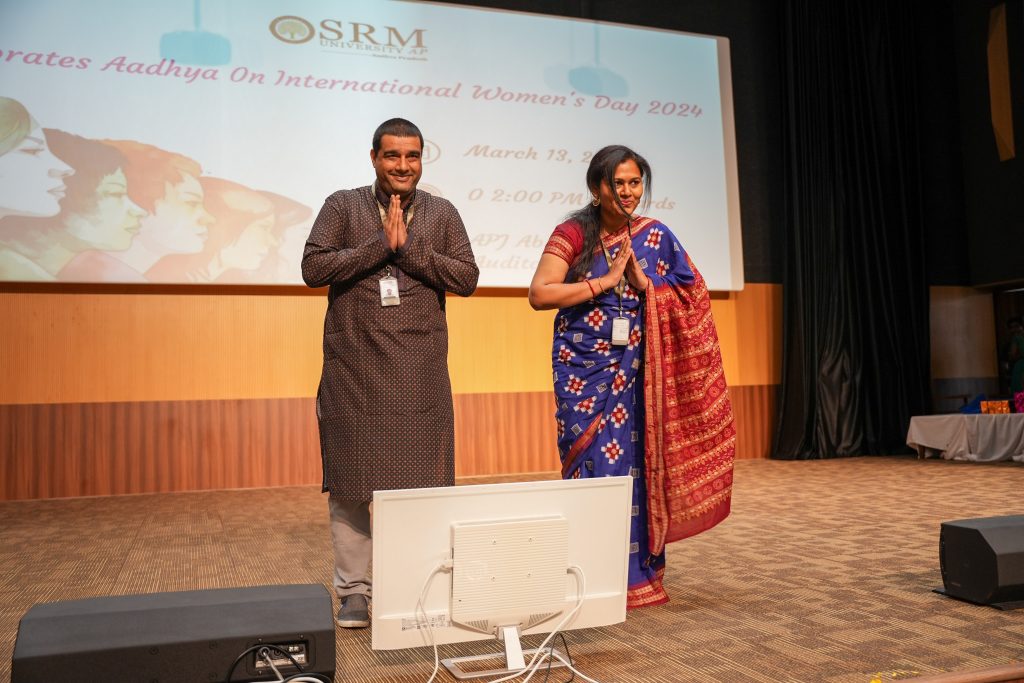
- Published in Departmental News, News, student affairs news
Shining Bright: PhD Scholar Wins 2nd Prize at National Symposium
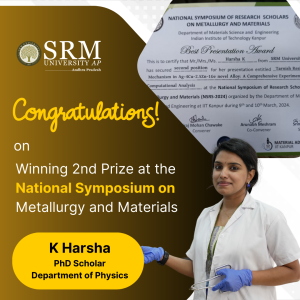 SRM University-AP is proud to congratulate Harsha, a brilliant PhD scholar from the Department of Physics, for her exceptional achievement at the National Symposium of Research Scholars on Metallurgy and Materials held at IIT Kanpur. Harsha secured the prestigious 2nd prize for her remarkable presentation titled “Tarnish Resistance Mechanism in Ag-4Cu-2.5Zn-1Ge Novel Alloy: A Comprehensive Experimental and Computational Analysis”.
SRM University-AP is proud to congratulate Harsha, a brilliant PhD scholar from the Department of Physics, for her exceptional achievement at the National Symposium of Research Scholars on Metallurgy and Materials held at IIT Kanpur. Harsha secured the prestigious 2nd prize for her remarkable presentation titled “Tarnish Resistance Mechanism in Ag-4Cu-2.5Zn-1Ge Novel Alloy: A Comprehensive Experimental and Computational Analysis”.
The symposium, organised at IIT Kanpur, brought together some of the brightest minds in the field of metallurgy and materials research. Harsha’s presentation stood out among the impressive array of research papers, showcasing her expertise and dedication to pushing the boundaries of scientific exploration.
Her presentation focused on the intricate mechanism of tarnish resistance in the Ag-4Cu-2.5Zn-1Ge novel alloy. Through a comprehensive analysis that combined experimental and computational approaches, Harsha shed light on the factors influencing tarnish resistance in this unique alloy composition. Her findings have significant implications for the development of advanced materials with enhanced durability and longevity.
The symposium, which congregates the brightest minds in the field, was the perfect platform for Harsha to showcase her extensive research. Her work, which provides significant insights into the tarnish resistance mechanisms of novel silver alloys, has been recognised for its depth and scientific rigour.
The recognition received by Harsha at this prestigious national symposium is a testament to her exceptional research capabilities and the quality of education and mentorship provided at SRM University-AP. It highlights the university’s commitment to nurturing talent and fostering an environment conducive to groundbreaking research.
SRM University-AP extends its warmest congratulations to Harsha for this remarkable achievement. Her success serves as an inspiration to fellow students and researchers, encouraging them to pursue excellence in their respective fields of study.
- Published in Departmental News, News, Physics News, Research News
Unleashing the Power of Neuroscience: Paper on Person Identification
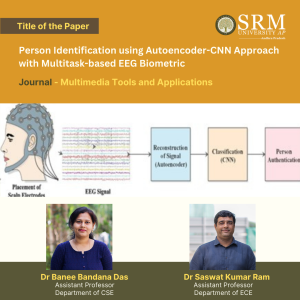 In a remarkable academic achievement, Dr Banee Bandana Das, Assistant Professor in Department of Computer Science and Engineering and Dr. Saswat Kumar Ram, Assistant Professor in Department of Electronics and Communication Engineering, have made significant contributions to the field of biometric security. Their paper, titled “Person Identification using Autoencoder-CNN Approach with Multitask-based EEG Biometric,” has been published in the esteemed ‘Multimedia Tools and Applications journal, which is recognised as a Q1 journal with an impressive impact factor of 3.6.
In a remarkable academic achievement, Dr Banee Bandana Das, Assistant Professor in Department of Computer Science and Engineering and Dr. Saswat Kumar Ram, Assistant Professor in Department of Electronics and Communication Engineering, have made significant contributions to the field of biometric security. Their paper, titled “Person Identification using Autoencoder-CNN Approach with Multitask-based EEG Biometric,” has been published in the esteemed ‘Multimedia Tools and Applications journal, which is recognised as a Q1 journal with an impressive impact factor of 3.6.
This pioneering work showcases a novel approach to person identification using electroencephalogram (EEG) data. The research leverages the power of Autoencoder-CNN models combined with multitask learning techniques to enhance the accuracy and reliability of EEG-based biometric systems.
The publication of this paper not only underscores the high-quality research conducted at SRM University-AP but also places the institution at the forefront of innovative developments in biometric technology. It is a testament to the university’s commitment to advancing scientific knowledge and providing its faculty with a platform to impact the global research community positively.
Abstract
In this research paper, we propose an unsupervised framework for feature learning based on an autoencoder to learn sparse feature representations for EEG-based person identification. Autoencoder and CNN do the person identification task for signal reconstruction and recognition. Electroencephalography (EEG) based biometric system is vesting humans to recognise, identify and communicate with the outer world using brain signals for interactions. EEG-based biometrics are putting forward solutions because of their high-safety capabilities and handy transportable instruments. Motor imagery EEG (MI-EEG) is a maximum broadly centered EEG signal that exhibits a subject’s motion intentions without real actions. The Proposed framework proved to be a practical approach to managing the massive volume of EEG data and identifying the person based on their different task with resting states.
The title of Research Paper in the Citation Format
Person identification using autoencoder-CNN approach with multitask-based EEG biometric. Multimedia Tools Appl (2024).
Practical implementation/social implications of the research
- To develop a personal identification system using MI-EEG data.
- This work is about an Autoencoder-CNN-based biometric system with EEG motor imagery inputs for dimensionality reduction and denoising (extracting original input from noisy data).
- The designed Autoencoder-CNN-based biometric architecture to model MI-EEG signals is efficient for cybersecurity applications.
Collaborations
- IIITDM, Kurnool, India
- National Institute of Technology, Rourkela, India
- University of North Texas, Denton, USA
Future Research Plan
In the future, different deep learning and machine learning methods can be merged to explore better performance in this EEG-based security field and other signal processing areas. We will investigate the robustness deep learning architectures to design a multi-session EEG biometric system.
- Published in CSE NEWS, Departmental News, ECE NEWS, News, Research News

